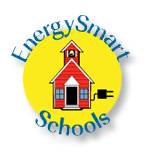Savings of 25 Percent and More…
Dozens of Ways Schools Can Lower Energy Bills and Improve Learning

The federal energy department is offering a series of publications that will help school districts save millions of dollars on annual utility bills by designing energy-efficient schools compatible with regional climates.
"Our nation's schools spend more than $6 billion on energy costs per year," Secretary Abraham said. "With these guidelines, schools can lower their energy bills by 25 percent and spend the savings for books, computers, more teachers and other worthy programs that improve learning."
The books provide information on site design, daylighting and windows, energy-efficient building shells, lighting and electrical systems, mechanical and ventilation systems, renewable energy systems, water conservation, recycling systems and waste management, transportation and resource-efficient building products. Another book, National Best Practices Manual for High Performance Schools, provides engineering and architectural specifications and other details on how to apply the guidelines.
The first set of guidelines, released in February, was tailored to hot and dry climates. The others address school design for the following climates: hot and humid, temperate and humid, cool and humid, cold and humid, cool and dry, and temperate and mixed.
The guidelines feature the best energy-saving practices from school administrators, architects, teachers, developers and other interested groups.
Copies of Energy Design Guidelines for High Performance Schools and the National Best Practices Manual for High Performance Schools are available free to the school design community in book form or on CD-ROMs by calling 1-800-DOE-3732. They are also available in PDF format on the EnergySmart Schools' web site at Energy Smart Schools.
About EnergySmart Schools
The Department of Energy's EnergySmart Schools Program helps schools reduce energy costs, improve the learning environment, and increase teacher and student awareness of energy issues.